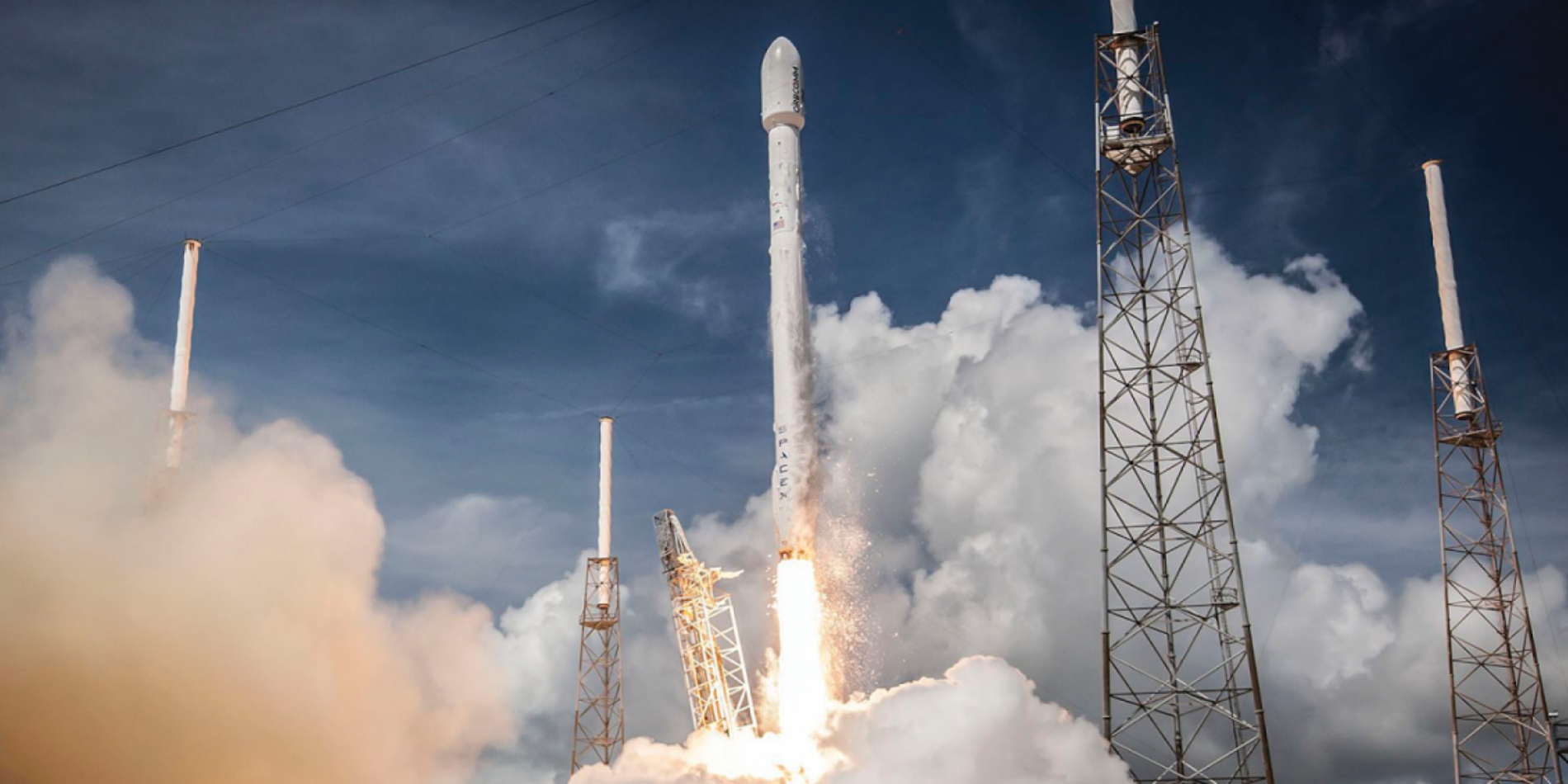How to reroute planes, on the fly, to prevent collisions with rockets
For more than half a century, the Federal Aviation Administration has used the same basic approach to prevent collisions between commercial planes and spacecraft being launched into orbit.
The FAA shuts down large swaths of airspace – anywhere from 35 to 1,700 square miles, for hours at a time – to prevent planes from colliding with the rocket or with debris from a failed launch.
Rerouting aircraft around closed areas causes flight delays, increases fuel costs and puts more carbon dioxide into the atmosphere. And these closures are bound to occur more often as companies like SpaceX and Blue Origin make suborbital and orbital launches much less expensive, and consequently much more frequent, says Mykel Kochenderfer, an assistant professor of aeronautics and astronautics at Stanford.
Now, one his PhD students, Rachael Tompa, has found an alternative to this blanket rerouting. With Kochenderfer’s help, Tompa has created a sophisticated computer model that would allow the FAA to designate smaller flight exclusion zones for normal launches, by literally rerouting aircraft on the fly should problems occur.
“As launches start to increase to multiple times a week or a day, airplane rerouting will become a really huge issue,” says Tompa.
Many efforts are underway to prevent flights from colliding with launches – while minimizing the disruption to commercial aircraft – by making the restricted airspace size dynamic. In other words, the restricted airspace would change over time depending on whether or not a launch is going well.
At Stanford’s Aerospace Design Laboratory, for instance, Thomas Colvin and Juan J. Alonso have designed a dynamic airspace framework called 4D Compact Envelopes. It has been shown to be safe and would result in the near elimination of disruption to aircraft traffic with one proviso: It assumes that the FAA’s new air traffic control system, NextGen, will include the capability to reroute aircraft around these dynamic no-fly zones.
But Colvin and Alonso are relying on future researchers to develop the necessary collision-avoidance algorithms. It is this missing functionality that Tompa seeks to provide with her model.
Building on the 4D Compact Envelopes framework, Tompa and Kochenderfer have devised a way to give specific reroute commands to aircraft in flight. Their proposed solution relies on finding a new use for a 60-year-old mathematical framework called a Markov decision process.
Originally introduced in the 1950s, Markov decision processes were originally used to determine the optimal time to service machinery at minimum cost. Continuously tinkering with the machinery might keep it humming, but at what cost? Being too stingy on service calls might precipitate expensive breakdowns. To use a fairy tale analogy, Markov decision processes helped Goldilocks make sure the porridge is just right.
As computers have gained the memory capacity and computational ability to solve bigger and more complex problems, researchers have started using Markov decision processes in robotics, economics and manufacturing – wherever engineers need to choose the optimal outcome in uncertain situations that change over time.
Tompa and Kochenderfer reasoned that Markov decision processes were well suited to airspace safety problems in which the unknowns include: when a launch failure might occur; the trajectory of the debris; how the wind affects that trajectory; and even how quickly a pilot will respond to the emergency.
For this research, Tompa coded a Markov decision process simulation around the interaction between a spacecraft launched from Cape Canaveral and the flight path of a Boeing 777-200 aircraft. The simulation could follow the trajectories of the two aircraft over approximately 13 minutes. The restricted airspace begins small. But if the spacecraft explodes, the model expands the restricted airspace and the system instructs the pilot to reroute by turning left or right, to the safest and most efficient route.
Tompa wanted to see how her new approach would compare to current FAA practices. So she simulated 101 commercial flight plans, and ran tests of each mock flight 100 times. This amounted to 10,100 simulated flights – every single one of which would have had to have been rerouted under current FAA procedures, at a huge inconvenience to travelers and a huge waste of aviation fuel. By contrast, using her model to redirect flights, she showed that fewer than 300 flights would have had to have been diverted.
“Having computers do what they’re good at, which is lots and lots of calculations, results in a system that is safer, less disruptive and more efficient,” said Kochenderfer.
Tompa and Kochenderfer plan to improve on this proof-of-concept research. They will work with the FAA Center of Excellence for Commercial Space Transportation at Stanford University to make the model more realistic by adding more than one flight at a time and improving the way it accounts for falling debris. They also plan to add international flights, which tend to come in over the water, exactly where spacecraft launches generally go.
Ultimately, their goal is to turn their model into a working system that pilots and air traffic controllers would actually use, and they have a few years yet to further develop and test their model.
“This system isn’t necessary yet but it will be in the future,” said Tompa, whose work on this project has earned her singular recognition. Tompa recently traveled to Washington, D.C., where Secretary of Transportation Anthony Foxx designated her the 2016 recipient of the Recognizing Aviation & Aerospace Innovation in Science and Engineering (RAISE) Award.



